Handling comments in Word documents
Working together on a document becomes easier when feedback can be shared directly, without rewriting someone else’s work. Comments make this simple: they let you attach a note to a specific part of the text, start a discussion, and keep the entire review process organized and easy to follow. Let’s see how to use comments effectively.

Role of comments in collaboration
When people work together on a document, the quality of the final result depends on how clearly they can exchange feedback. Simply rewriting someone’s text or leaving notes in a separate message often creates confusion: parts get lost, suggestions overlap, and no one remembers what belongs where.
Comments solve this by keeping every remark exactly where it needs to be — inside the document, tied to the specific piece of text it refers to. They turn a file into a shared space where ideas, questions, and corrections can be discussed without altering the original content.
This makes collaboration easier to track, more transparent, and far more efficient, especially when several people review the same text at different moments.
How comments work in document editors
Even though each editor has its own layout and buttons, the logic behind comments is almost always the same. Let’s see a practical example using ONLYOFFICE Document Editor, a clean and fully-featured tool for creating and reviewing documents.
1. Selecting the text you want to discuss
The first step is choosing the part of the document that needs attention. This can be a single word, a sentence, or an entire section. Selecting text helps anchor the comment, so anyone reading it knows exactly what it refers to — no guessing, no searching.
2. Adding a comment
Editors generally offer several ways to insert a comment: a button in the toolbar, an option in the right-click menu, or a shortcut in the review panel.
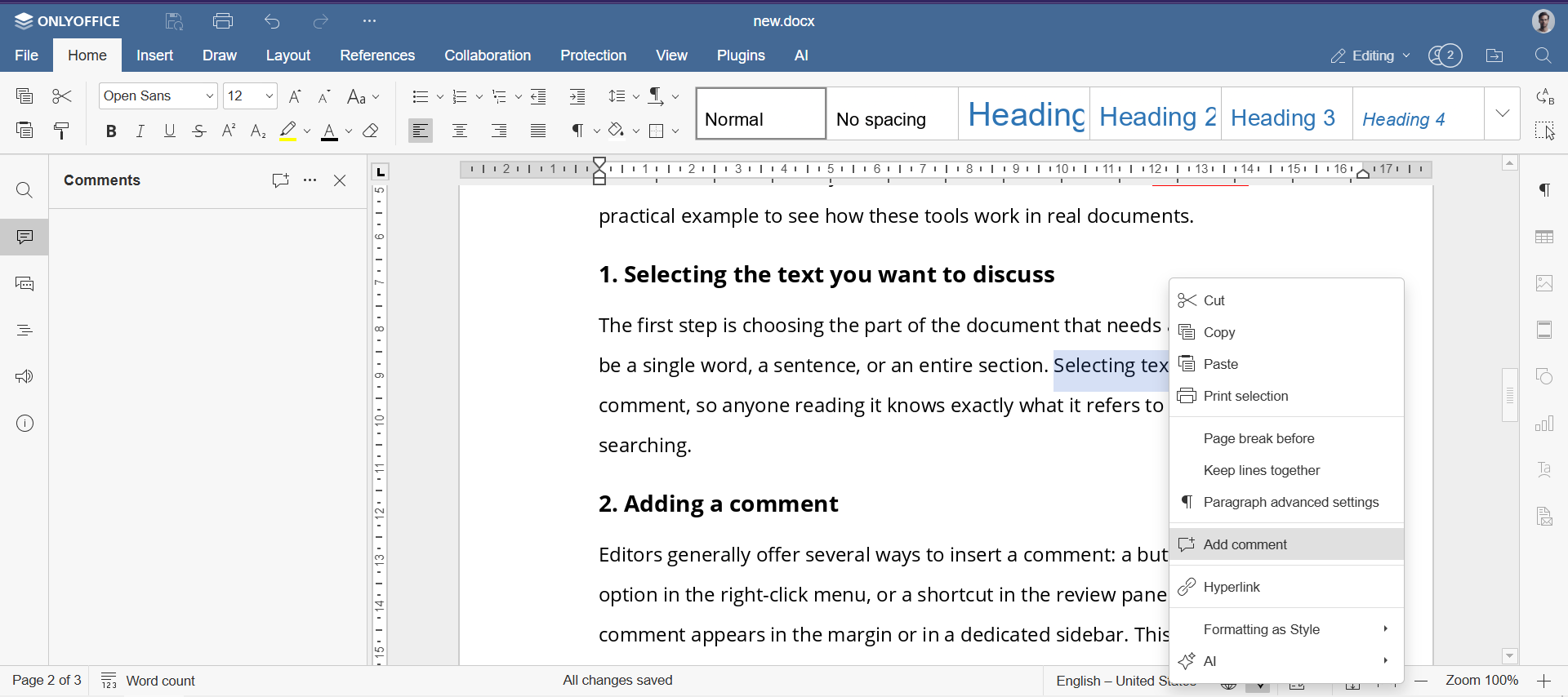
Once added, the comment appears in the margin or in a dedicated sidebar. This visual placement makes it clear to all reviewers where feedback has been left.
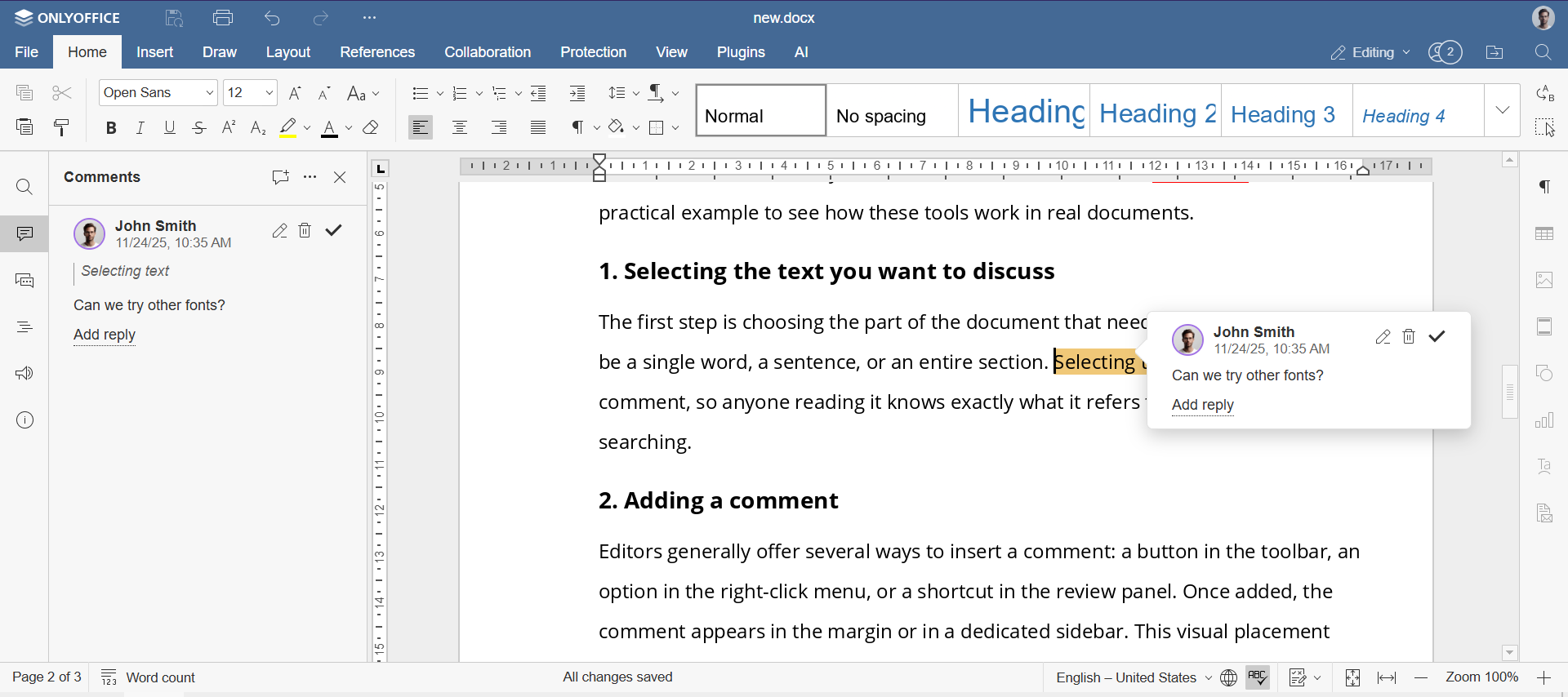
3. Mentioning specific people
Modern editors often support mentions. Typing “@” or “+” followed by a name allows you to point a comment directly at someone. This helps teams assign tasks, ask for specific input, or notify a colleague who needs to review a certain part. The right person is alerted immediately, reducing delays in the workflow.
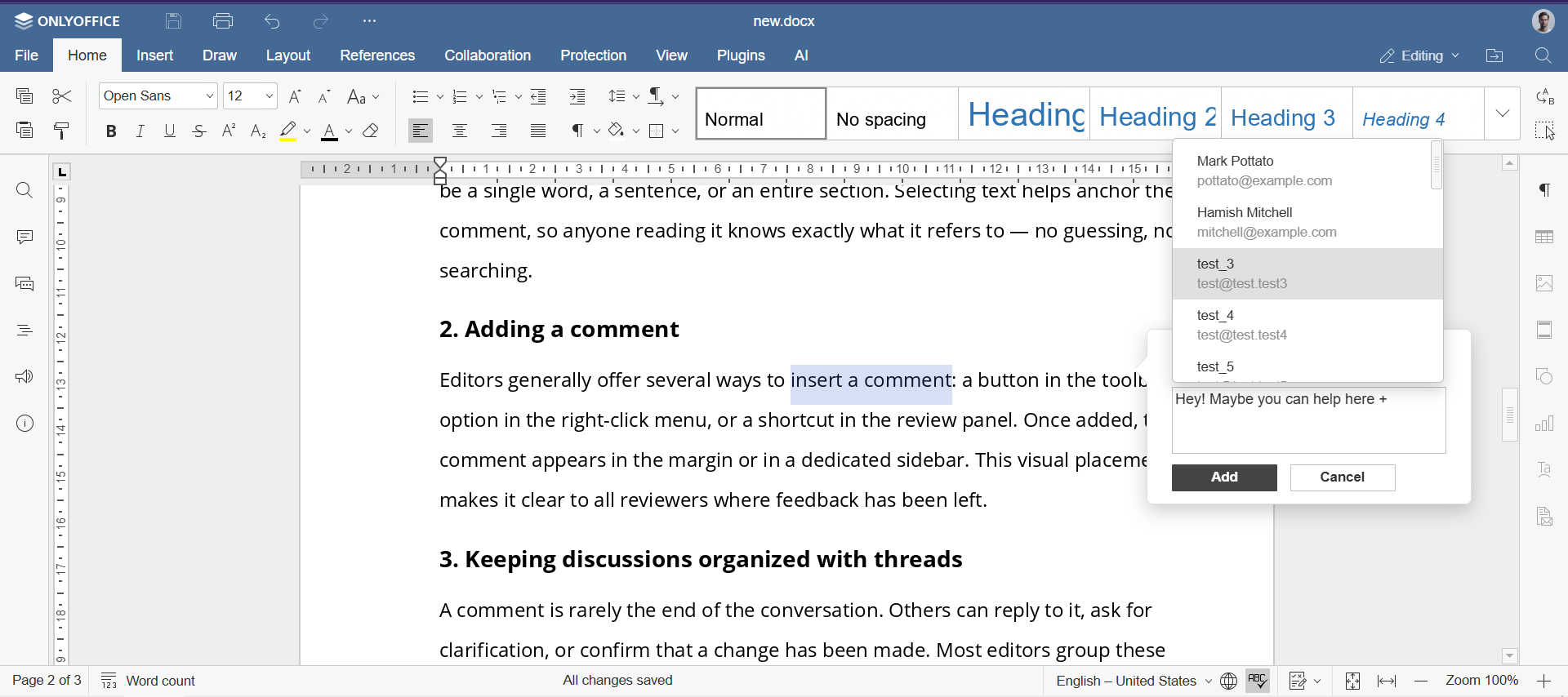
4. Keeping discussions organized with threads
A comment is rarely the end of the conversation. Others can reply to it, ask for clarification, or confirm that a change has been made. Most editors group these exchanges into threads to keep everything tidy. Instead of scattered messages, you get one focused place where the entire discussion stays together.
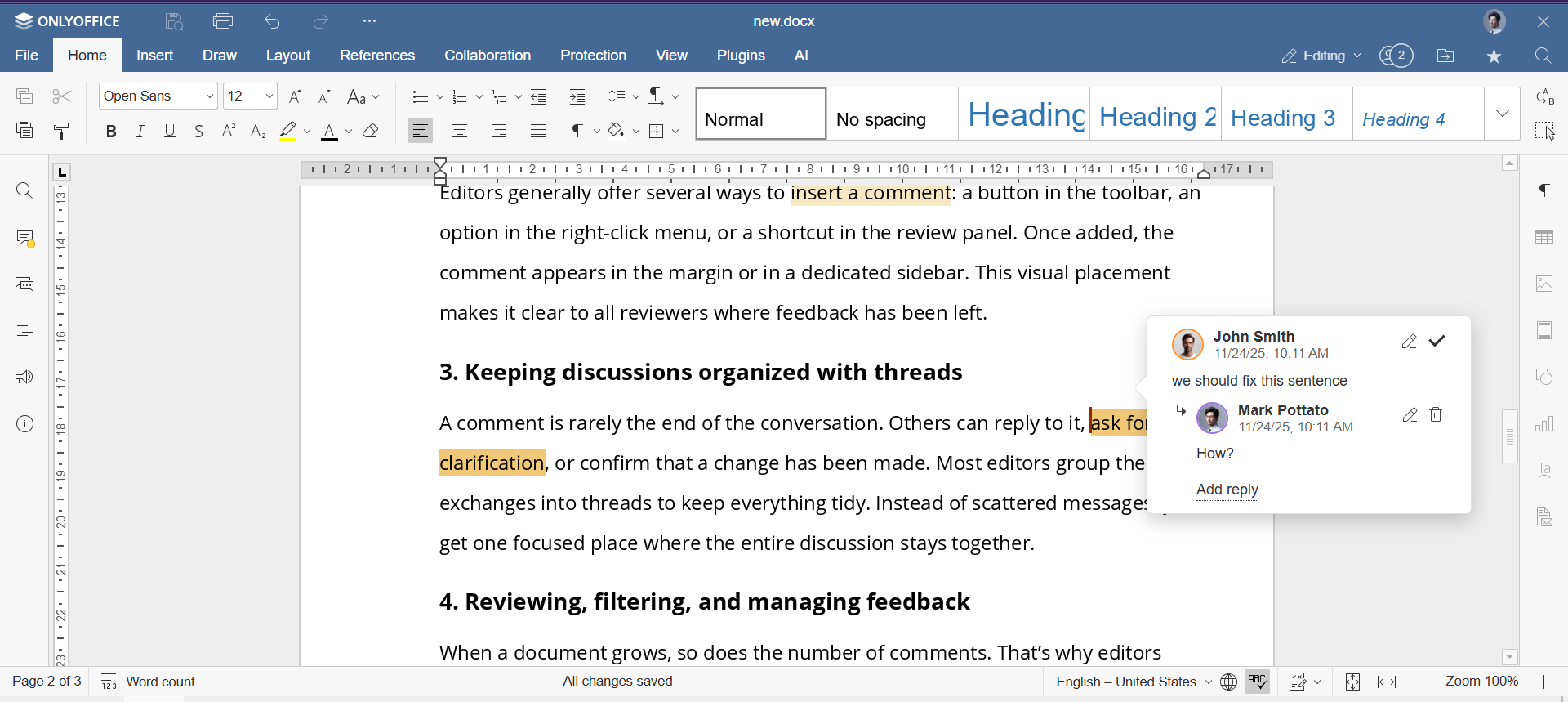
5. Reviewing, filtering, and managing feedback
When a document grows, so does the number of comments. That’s why editors include options to scroll through them quickly, jump to the next or previous one, or filter by author.
This helps reviewers concentrate on the feedback that matters most to them. Some tools also highlight comments differently depending on status or user, making navigation easier in long files.
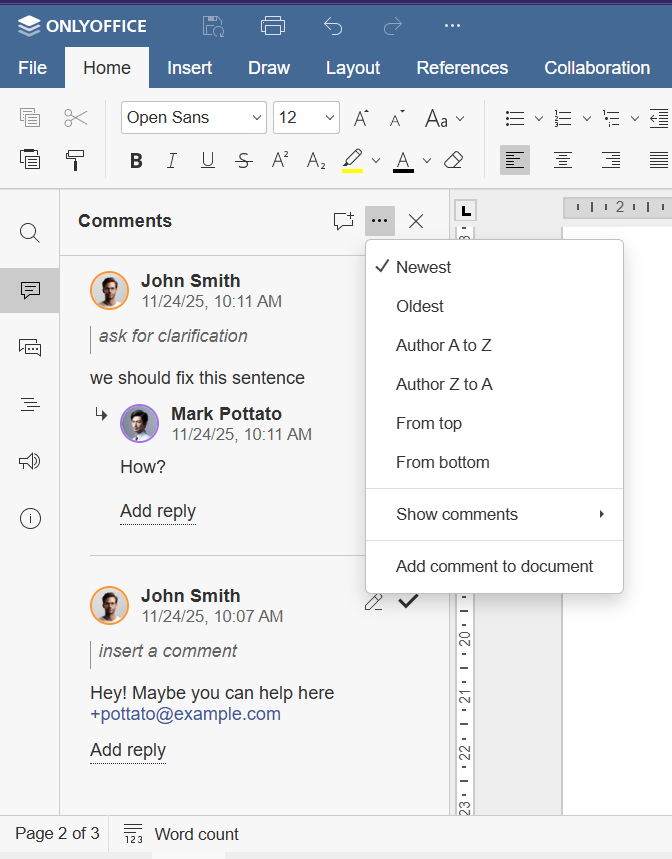
6. Hiding comments when you need a clear view
During writing or layout work, comments can visually clutter the page. Editors let you temporarily hide them, so you can focus on the text without distraction. When you’re ready to continue reviewing, you simply show them again.
7. Resolving or deleting comments
Once an issue is fixed or the suggestion has been considered, you can resolve the thread. This keeps it visible for reference but marked as completed.
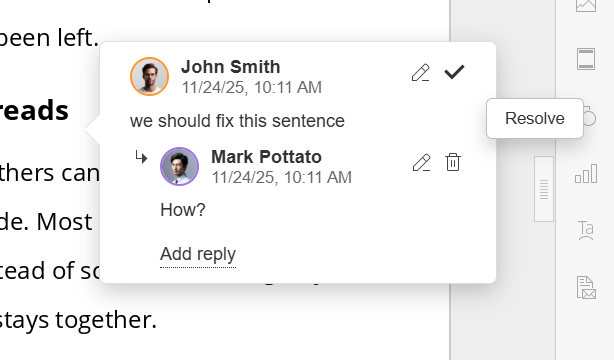
If you prefer a clean document, you can delete individual comments or remove them all at once before finalizing the file. This step is important for preparing documents meant for publication or external sharing.
And that’s it! With comments organized and tracked, your document is ready, and teamwork becomes much smoother.
Get ONLYOFFICE Document Editor and streamline your review process
Want to make collaboration clearer and faster? ONLYOFFICE Document Editor lets you work with comments more efficiently right away.
If you don’t have a ONLYOFFICE DocSpace account yet, you can create one for free. Try it online or with our desktop applications.
Conclusion
We saw how comments work and why they matter during collaboration. They keep feedback clear and in the right place, helping teams avoid confusion, track decisions, and move through reviews with less friction. In the end, just choose a functional editor like ONLYOFFICE — and comments will make your teamwork smoother right away.
Create your free ONLYOFFICE account
View, edit and collaborate on docs, sheets, slides, forms, and PDF files online.


